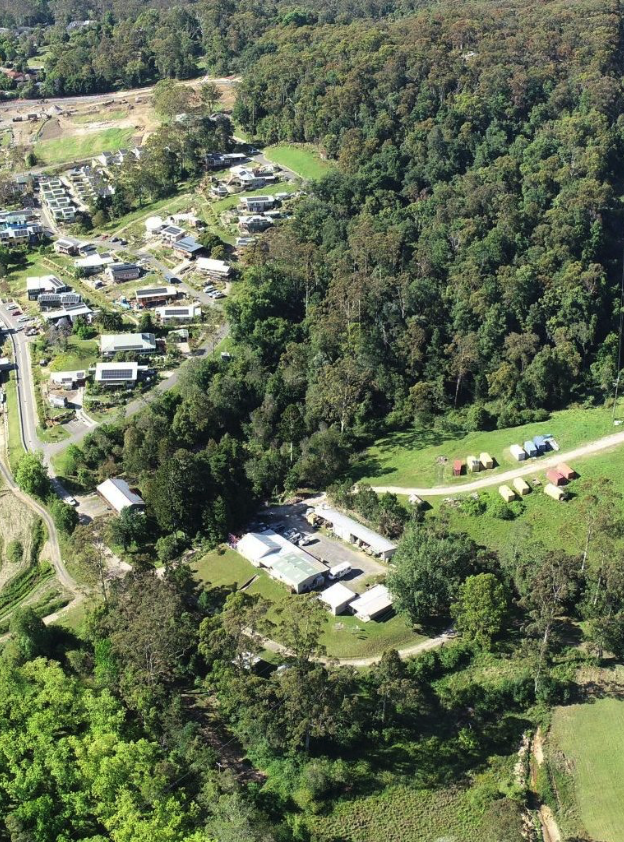It’s been a year of unexpected and serendipitous connections for Mike and I with other Ecovillage developers in Australia. It’s a bit of a niche what we do in this space as creators of truly sustainable, community focused human settlements, and despite our different locations, we share many unique challenges and achievements that aren’t reflected in the usual business of standard residential development.
Professionally, meeting up with kindred founders has been the only time that Mike and I have connected with people who really understand how much work it takes to propel a project of this complexity and rigour from dream, ideal and vision into reality on the ground.
Mike will catch you up on our inspiring August visit to the Currumbin Ecovillage in the next article, but I was lucky enough in November to have a brief but delightful meeting with Lyndall Parris, the founder of the Narara Ecovillage, an ecovillage located about an hour north of Sydney (a big thank you to our thoughtful Cluster 4A resident, Ruth, who kindly introduced us!) Over hot chai on a cool spring morning in Margaret River, Lyndall and I shared our Ecovillage stories and compared some of our current challenges.
If you don’t know of it, Narara Ecovillage (NEV) is an (approx.) 120 lot ecovillage on 64 ha with about 60 houses built to date. It was founded in 2006 by Lyndall, supported by her partner Dave. An accountant by career and with no property development experience, Lyndall was shocked into action by the sudden passing of two friends in their fifties, leaving her feeling helpless at a distance from their families, knowing that they weren’t supported by a close-knit community. She imagined an alternative vision of a sustainable, community focused life where such support was built into the very fabric of the masterplan.

Lyndall found the ideal parcel of land, a disused govt horticultural research centre, and initially pursued her vision with the assistance of some sympathetic property developers, gathering like-minded people along the way.
When the developers had to withdraw their support post GFC, the loosely formed group then pivoted to a different model. Unlike the Witchcliffe Ecovillage, which is wholly developer funded, the initial funding for the Narara Ecovillage came from its member investors, who set up a cooperative company and risked their own capital to purchase the land and fund the development. They proudly say “we built our community first before our homes.”
With this member funded structure, the Narara Ecovillage is set up as an intentional community, and they use the Sociocracy governance model to organise and make decisions, and this has been very successful for them. Narara Ecovillage members first invest in the co-op with a substantial up-front fee, and then purchase a lot to build their home. The co-op provides services like water and power via 2 licenced private utilities that connect residents to water and sewerage services, and provides a microgrid and battery storage to residents with annual fees to cover the operation of these services. Members contribute 52 hours per year of volunteer hours to the co-op, and pay annual membership fees.
Although our infrastructure, governance and ownership structures are quite different, our two eco-developments share a strong focus on achieving true sustainability objectives and enabling community activation. Like us, they encountered serious difficulties with state planning and local government processes along the way, with outdated policies and bureaucracies not set up to accommodate innovation and best practice solutions in the field.

Lyndall has a wonderful and empowering story to tell, of an enduring vision and a single-minded dedication to bring a ground-breaking project to reality despite many challenges. I have ordered Lyndall’s book and will add it to our Ecovillage library, and maybe one day, our telling of the Witchcliffe Ecovillage journey will sit beside it! Mike and I hope to visit Lyndall at Narara next year and will explore the potential to encourage communication and visits between our residents.
In the meantime, I encourage you to visit their brilliant website for more information.

